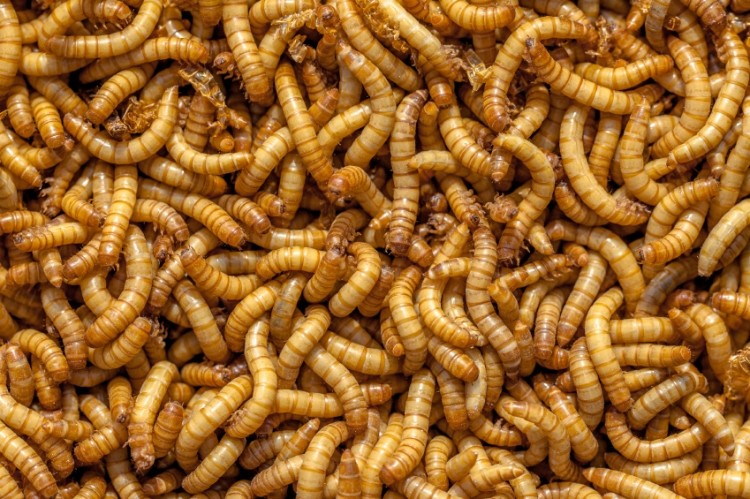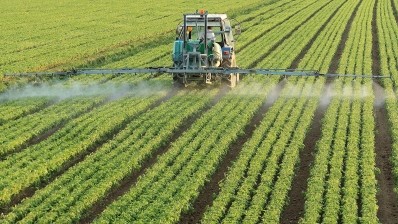Hawaii based project leading to a 'paradigm shift’ in insect based feed production

The company’s process is based on black solider fly (BSF) larvae eating waste sourced from grocery stores or school cafeterias. The fattened grubs are then processed into poultry feed.
But it is the reactor technology behind the waste to feed process that is the real game changer, said Olivier.
“Sometimes new innovations bring about a 10% rate of improvement, sometimes they result in 10 times a difference. Our technology is just that – the 10x change – the breakthrough. I can go so far as to say that our method represents the paradigm shift in insect farming,” he said.
Policymakers and the investment community seem to agree. Prota Culture has raised over $1million in grants and funding from multiple sources, to develop its novel bioconversion technology.
The US Department of Agriculture (USDA) is backing its bid to restart local production of poultry feed in Hawaii, and last week saw the company awarded $75,000 from US non-profit group, Energy Excelerator, towards its research.
Bioconversion efficiency
“What we have done is biostabilize the waste bioconversion process, through homeostatically controlling all the parameters in our reactors through a sensor board, meaning we avoid the conditions that allow a build-up of thermophilic bacteria that start the composting process.
So, in effect, we have learnt how to slow down the food waste composting process in a reactor, giving the larvae enough time to catch up,” Olivier told feednavigator.
Subsequently, the larvae don’t just reside then on the top layer of the feedstocks, as they do in other organic material transformation methods, but are eating throughout the entire reactor, enabling a level of bioconversion efficiency previously unseen and resulting in minimal compost production, he added.
“Our system, unlike ones that rely on thousands of shallow trays for insect farming, is not capital or labor intensive either - the operator only has to load the unit with feedstock to its maximum level once a day.
The technology allows for commercial quantities of diverse organic materials to be processed daily without needing to shred the material, or analyze it for nutrient or moisture content,” said Olivier.
The company uses 180kg of food waste per day to feed its four pilot scale reactors. The land space required for a production unit would be around 14 square feet (1.3 square meters).
“There is a significant amount of interest from commercial parties in the reactor technology. But before we think about marketing the units, we have to validate the process, and evaluate performance over one week, three months or six months,” said the CEO.
Trial of larvae-derived feed in layers
Olivier said Prota Culture is working in tandem with Hawaii’s College of Tropical Agriculture and Human Resources (CTAHR)’s Bioenergy and Environment Research Group to trial the prepupae yielded by the BSF larvae as feed for layers.
“We are currently conducting a USDA feed trial in Maui with 120 birds. It’s a small study but, already, we can see that egg production has been phenomenal,” said the entrepreneur.
He said that CTAHR based PhD students will explore the prepupae’s use in both standard and tropical poultry diets.
Hawaii poultry industry decimated
No soy or corn is grown in Hawaii, and, the ever increasing freight cost for imported feed has made purchasing it prohibitive, with the net result being a once vibrant poultry industry is now severely curtailed. In 30 years, Hawaii’s annual production of eggs has gone from 229.3 million in 1979 to less than 5.9 million in 2010 (USDA 1979, 2010).
A local production of a cheap protein source for poultry feed could revitalize the sector, making the islands self-reliant in terms of supplying eggs and chicken.
Olivier said that Prota Culture has also produced fish feed ingredient at the Oceanic Institute in Hawaii and is in discussions to commence feeding trials on tilapia and shrimp.
However, the company also needs to demonstrate the safety and utility of its feed to comply with regulatory requirements.
“An ingredient has to be either Generally Recognized as Safe (GRAS) or it must be reviewed and approved by the US Food and Drug Administration (FDA).
Fortunately, in Hawaii, the Secretary of Agriculture can also approve an additive for commercial use if it meets the safety criteria and if it is not going to be exported beyond the State. We hope a pathogen study we are carrying out with CTAHR will be sufficient to gain this level of approval so we can begin to make poultry and egg production on Hawaii economically viable again,” said the CEO.








